In-Depth with the Windows 8 Consumer Preview
by Andrew Cunningham, Ryan Smith, Kristian Vättö & Jarred Walton on March 9, 2012 10:30 AM EST- Posted in
- Microsoft
- Operating Systems
- Windows
- Windows 8
The Desktop
If you refuse to believe that Metro can bring you anything but pain and sorrow, the good news is that the Windows desktop is still here, and it’s just as powerful and full-featured as it was in Windows 7. In fact, except for the absence of the Start button, it’s largely identical to the desktop in Windows 7—Metro is obviously where Microsoft has spent most of its development effort this cycle, but the Windows 7 desktop is still good enough that it’s not a big deal. You already know how this works if you’re a Windows user, but there have been a few useful enhancements and tweaks to give heavy desktop users some reason to upgrade.
Windows Explorer

A Windows 7 window (top) compared to a Windows 8 window (bottom). Note the very slightly narrower horizontal window borders in Windows 8.
The first thing you'll notice is that the window borders have changed slightly from those in Windows 7—corners are now squared-off, rather than rounded, and the font size in windows title bars is quite a bit larger. Window borders have also been put on a diet, though a very modest one—a Windows 8 window will use about four pixels less horizontal space than a Windows 7 window providing the same information.
The next thing you'll likely notice is that Windows Explorer has picked up the Ribbon interface first introduced in Office 2007. You’ve probably already seen and formed an opinion about the Ribbon (it also found its way into some Windows 7 applications like Paint and Wordpad, and was refined for Office 2010)—it was introduced in Office to replace the arcane maze of traditional menus and expose hidden functionality that people weren’t using because it was hard to find. In the context of a feature-rich program like Office, I think it does just what it was designed to do. In a less feature-packed program like Paint, I think it’s unnecessary but inoffensive. In Windows Explorer, it falls somewhere in between.

The Explorer ribbon is minimized by default
If you’re a power user who does most Explorer tasks with keystrokes (and let’s face it, 90% of what most people do in Explorer can be accomplished with just the CTRL, C, X, V, A, and Delete keys), you might not even notice the change—the ribbon is minimized by default and this makes Explorer look more or less like it did in Windows 7. You can expand and contract the ribbon using an arrow in the upper right-hand corner of the screen, and Windows Explorer will remember this preference for future sessions.
Clicking one of the headings like “File” or “Home” will expose all of the Ribbon functionality temporarily. The File menu is usually always present, and earns its keep solely by the ability to launch Command Prompt and PowerShell windows (both as the logged in user and as Administrator) in the current path, and the Home menu contains most commonly used file tasks (copy, paste, properties, and some others). The View tab controls the view settings, obviously, and the Share tab lets you share files both via email, printing, and burning to disc, as well as handling basic file sharing. To speed up window draw time, folders no longer display small icon overlays when shared or made private—you can view these settings by turning on new “sharing status” columns in Explorer. Hovering over most buttons will reveal tooltips that describe the button’s functionality and, if applicable, a keyboard shortcut that can be used to perform the same action.

A context-sensitive Ribbon menu
Other ribbon menus are context-sensitive, and show up only when applicable files are selected: for example, the Application Tools menu shows up when highlighting an executable, the Picture Tools menu shows up when highlighting an image, the Disk Tools menu appears when working with internal or external drives, and the Disc Image Tools menu shows up when highlighting an ISO or VHD image (both of which can be quickly and seamlessly mounted into Windows Explorer without third-party tools).
Copying Files
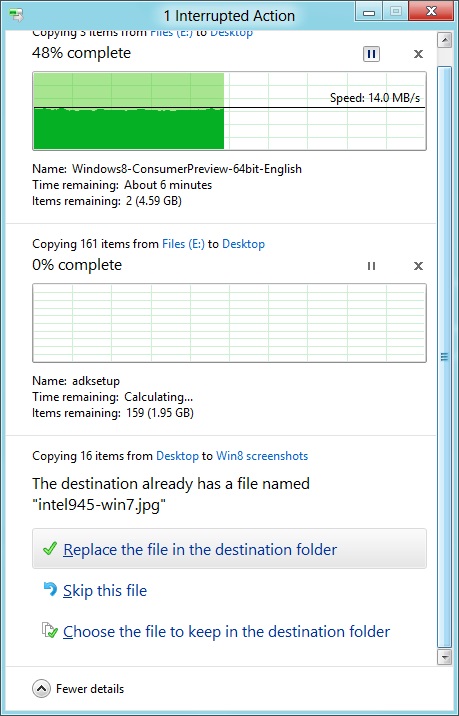
The new file copy dialog box is focused on giving you more information and more options than the file copy dialog in Windows 7. For starters, all file copy operations now happen in one unified window, instead of opening a new window for every file copy. Most file copy conflict resolution also takes place in this window without opening separate dialog boxes, though a separate window does pop up if you need to make choices more complicated than “skip” or “replace.” In the event of conflicts that need user input, Windows queues most error messages and displays them at the end of the operation, so as not to hang up the bulk of the copy waiting for user input.
When two files in a copy operation do conflict, Windows will give you the (opt-in) option to skip files that also have the same timestamp and file size while copying over files that just have the same name as files in the target folder. This catches files with the same name that have actually been changed while skipping over files that have stayed the same.
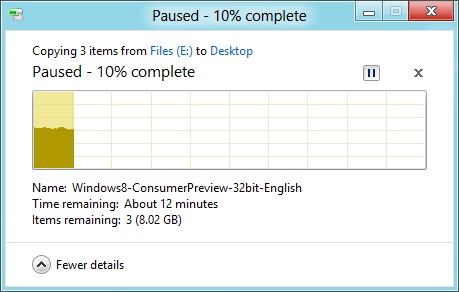
Copy operations can be paused manually, and will automatically pause if the computer hibernates or goes to sleep
In detail view, the progress bar for the copy also serves as a graph of the copy speed over time. Copy operations can be paused mid-stream, and if the computer goes to sleep or hibernates in the middle of a copy operation, the copy will pause and can be manually canceled or restarted the next time the computer wakes up.
SmartScreen
Windows 8 also brings Internet Explorer’s SmartScreen functionality to the OS level—when running an unrecognized or known-bad executable, Windows presents a full-screen message telling you that the program is unrecognized. By default, there’s no button to tell the program to run anyway, preventing an automated “just click Yes” response from users. To run the program, you must first click “More info,” and then click “run anyway.”
Some other, smaller changes have also been made to Explorer: images will now automatically rotate based on EXIF data, a tricky navigation pane scrolling bug has been removed, folders and executables can now be added to the Start screen, and users are no longer prompted to confirm whether they really want to send files to the Recycle Bin. All of these little changes add up to an Explorer update that’s a bit more impressive and a bit more useful than the one we got moving from Vista to 7.
Multi-monitor support
There are plenty of other Desktop features that don’t have anything to do with Explorer, and the most useful of them all is improved multi-monitor support.
In Windows 7 and before, Windows’ multi-monitor implementation supported displaying the taskbar on just one screen, meaning that no matter which screen you were working on you’d always have to go back to the main monitor to manipulate it. No more in Windows 8: the taskbar can now be configured to appear on both screens. This doesn’t change how programs remember their screen location—they still open on the screen they were last launched on, regardless of which taskbar you use to open them. The taskbar can either display all of your pinned icons on both monitors, or you can display all icons on the primary monitor and just icons for open windows on the second monitor. Taskbar location/orientation can be configured independently on both monitors.
For multi-monitor users, Microsoft provides some extra-wide wallpapers that can stretch across multiple screens, but there’s still no way to use a different wallpaper for each desktop, something that OS X has supported forever. It’s not a big deal, but I’m not sure what technical hurdle it is that Microsoft can’t jump over here. Update: As several readers have pointed out, you can set separate wallpapers for different monitors by right-clicking on the wallpapers in the Personalize control panel and selecting "Set for monitor X" as shown in the screenshot below. Thanks to all who sent this in!

When using a multi-monitor setup, the start screen and Metro apps can only use the primary monitor. You can continue to watch a video or work in desktop apps on the other screen without interrupting what you’re doing in Metro, and vice versa—when not using a desktop app, the desktop and taskbar will sit on the other monitor(s) and wait for your input. Changing your primary monitor can be done in a few different ways—in the Screen Resolution control panel (as in Windows Setup), via the Metro Devices charm, and by right-clicking the taskbar on the secondary monitor and clicking “make this my primary taskbar.”
Notifications

Notifications in Windows 8 eschew desktop windows entirely, even when you’re using the desktop. When an action prompts a notification (common causes include insertion of USB drives or other media and installation of new programs, as well as those generated by installed Metro apps), it slides in from the upper-right corner of the screen. Clicking or tapping it will bring up a menu that lets you decide what you want to do.
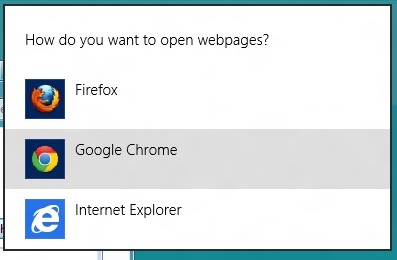
You can control which apps send you notifications in the Settings charm, or in the Metro control panel. Like other mobile OSes, Windows lists all apps capable of sending notifications and lets you toggle them on and off with a slider.
...The More Things Stay the Same
The changes above are the most significant you'll see on the desktop—otherwise, most things have stayed the same. Things like Paint, most Control Panels, WordPad, the Event Viewer, Windows Media Player and countless other built-in Windows tools are more or less identical to their Windows 7 counterparts, often implementing a version bump from 6.1 (Windows 7) to 6.2 (Windows 8) to keep things consistent. Remember: the XP (5.1) to Vista (6.0) transition was the last major under-the-hood version jump for Windows. To maintain compatibility with programs that check the Windows version number, Windows 7 was actually Windows 6.1, and in the same spirit Windows 8 is Windows 6.2.
I don't expect most people to feel very strongly about these non-changes, but there is one that will make a small but vocal subsection of the Windows user base pretty upset: Windows Media Center is still here, and it’s... exactly the same as the Windows 7 version. I suppose that’s good news, if you’re married to Media Center or if you were worried that it would be removed, but if you’re expecting the program to continue to evolve and improve as time goes on, well, it might be time to start looking into alternatives.


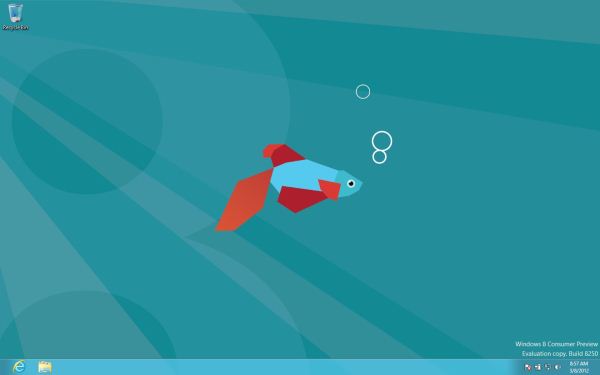
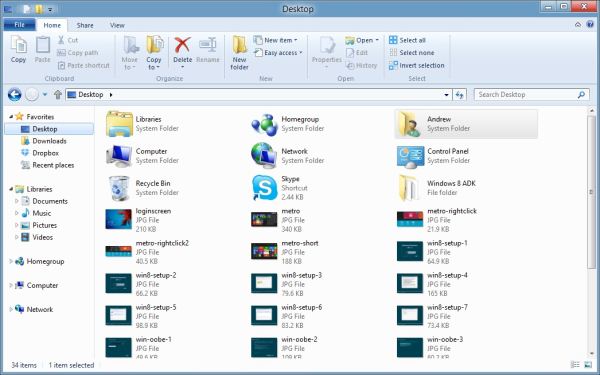
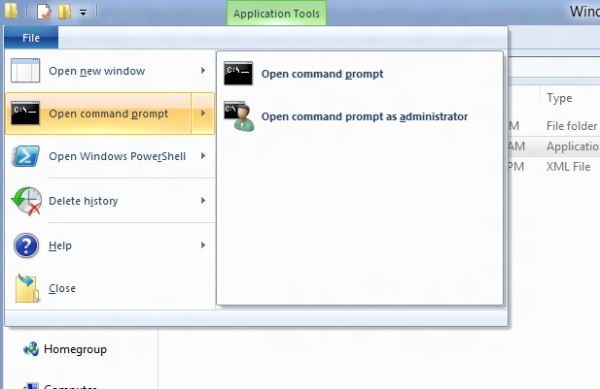
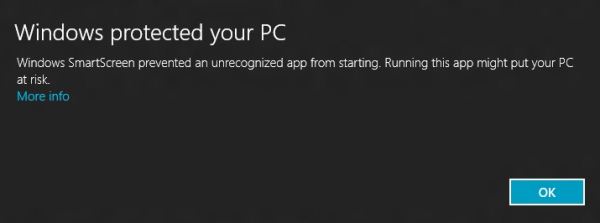
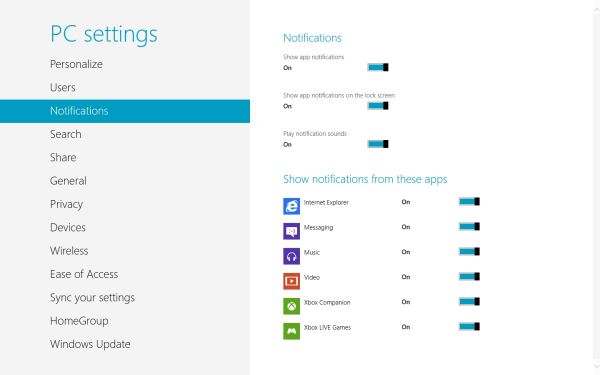








286 Comments
View All Comments
yannigr - Thursday, March 15, 2012 - link
May I say something here?Sorry for my English in advance.
I don't know if your work at Anandtech is a full time job or more like an occasional work. When you see a site like Anandtech you think that this is more like a big company with full time employees not a site with people that come and go just to write an article, or a review, at their spare time with hardware that they buy or if they are lucky get from the big companies as a gift for a presentation/review.
So when you are thinking Anandtech (and this is where maybe we misjudge you) as a big company you don't expect to read stuff that you read from a 16 years old kid in a small forum with 2-5-10 thousand members about his last review. I can not accept an excuse like this that you give. If you are in the BIGGEST and MORE RESPECTED hardware review site on the internet, and I don't think I am wrong here, you buy hardware that you also DO NOT LIKE or is not good enough for YOU. Why? Because that is your job or/and because you are writing for ANANDTECH not YannigrTech.
When you have the time to fast-test 8 machines you try to find an AMD system and even if it exists a system with VIA hardware. I know I must be joking with the last one about VIA. Well, I am not. I do think that if there was a VIA system in there many would be posting about how they were surprised about that. Even if they where laughing at it's performance it would have been a plus for the review.
Think a review many pages long about the next 3DMark only with AMD gpus because the reviewer don't find Nvidia gpus good enough. Many Nvidia fans would have been disappointed, to put it mildly.
Anyway the first post was written just for fun, because I know that Intel don't only have the better hardware but also the biggest influence not only at hardware sites but in people's minds too. Between two equal systems most just choose Intel because it is an Intel.
This post was whiten only because I was not expecting someone that writes for Anandtech to say that:
I only have Intel, I am not buying AMD because it is just not good enough for me.
Last. Thanks for the review. No joking here. It was interested and useful.
Andrew.a.cunningham - Monday, March 19, 2012 - link
First, thanks for reading! I'm glad you found the review useful. Second, I want to try to answer some of your questions as to how AnandTech (and most new outlets on the Internet) work.Most writers who get paid are not working full-time positions. This is true both of independently owned websites like AnandTech, corporate-owned sites like IGN, or even big-time traditional publications like the New York Times. Most sites will contract freelancers rather than full-time workers both because of cost (freelancers are almost universally paid less than salaried employees and get no benefits) and administrative reasons (full-time employees mean that you've got to start paying attention to things like benefits and payroll taxes, necessitating a larger administrative staff to handle things like accounting).
Different outlets handle things in different ways - at AnandTech, the pay is OK for contractors, and most of us can bother Anand himself if we have questions about a story we're working on. On other sites (to cherry-pick an extreme example, let's call out the Huffington Post), freelancers are sometimes paid nothing, and are rather compensated with "exposure" and clips that they could in theory use to land a paying gig later on. I think what HuffPo (and, really, any profitable publication that doesn't pay its writers) does is a scam and I've got some strong feelings about it, but that's not my main point - my point is that much of what you read on the Internet is being written by people who don't write on the Internet full time. At AnandTech, even the senior editors are contracted freelancers rather than full-time employees.
Different people write for different reasons, but my goal is to make a living at it - I'm doing it because I love it, sure, but I'm also doing it because there are bills to pay. To do that, I cannot and will not spend $500 on hardware to use in a review that will earn me quite a bit less than $500. As anyone can tell you, that math doesn't add up, and since this is a review of the beta version of an x86-compatible Windows product - a product that looks and acts the same on any hardware that meets the minimum requirements - it's frankly not as important as a few of you seem to think it is. And that's all I have to say about it.
yannigr - Monday, March 19, 2012 - link
I still believe that you should buy an AMD system. Not today or tomorrow but the next time you would need an extra machine. But that's me.Thanks for answering my post :-)
Andrew.a.cunningham - Monday, March 19, 2012 - link
I'll look into it for sure. Trinity has my interest piqued. :-)TC2 - Sunday, March 11, 2012 - link
AMD?This isn't the point! Andrew Cunningham here hasn't downside. I want to ask, what is the problem here? The recent Intel CPUs a far superior than the amd cpus! And, if you want to know the best sides of W8 ... the amd just isn't the first choice ... :)))
silverblue - Monday, March 12, 2012 - link
At the time Andrew got those machines, the best option across the board likely would've been Intel. The Atom build is thoroughly outclassed by Brazos but it simply wasn't available at the time.It's only really the past twelve months to fifteen months where AMD has actually had a viable range of mobile processors for netbooks and larger.
medi01 - Monday, March 12, 2012 - link
Name something "far superior" to AMD A8 3850 that has comparable cost.TC2 - Wednesday, March 14, 2012 - link
Oops to daisies :) It would make a god to tears!You and all amd-fans, are very funny!
When the conversation is about cores - "amd has twice than Intel" ?!
When the conversation is about performance - "the cost isn't comparable" ?!
When the conversation is about CPU - "amds APU is bla-bla..." ?!
When the conversation is about benchmarks - "look look, the BD is almost like Nehalem (btw. 2 generations older)" ?!
All those is UNTRUE!!! And remember well - I and many-many people doesn't give a shit about amds green presentations, cores and so ... We need fast CPU in ST as well as MT, and fast GPU! And believe me, esp. in professional segment amd got nothing significant :)))
chucky2 - Friday, March 9, 2012 - link
I'd like for you to do an article on feature support of DirectX 9 cards under say Windows XP SP3 vs Windows 8. I know AMD dropped support for their DirectX 9 based cards before their 10.2 (Feb 2010 driver set), and then later belatedly added 10.2 as the last supported driver. My interest is in if they've dropped proper support of their cards in Vista/7/and now 8 rather than putting in the (very likely minimal) work to properly support them.Thanks for the article!
Andrew.a.cunningham - Friday, March 9, 2012 - link
The 10.2 driver was only supported under Vista, but in my experience it works fine for Windows 7, which means it should work OK in Windows 8. One of the iMacs I tested on used a Radeon X1600 Mobility card - I installed the Vista-certified driver off of a Snow Leopard DVD and didn't see any crashes or instability, but your mileage may vary.